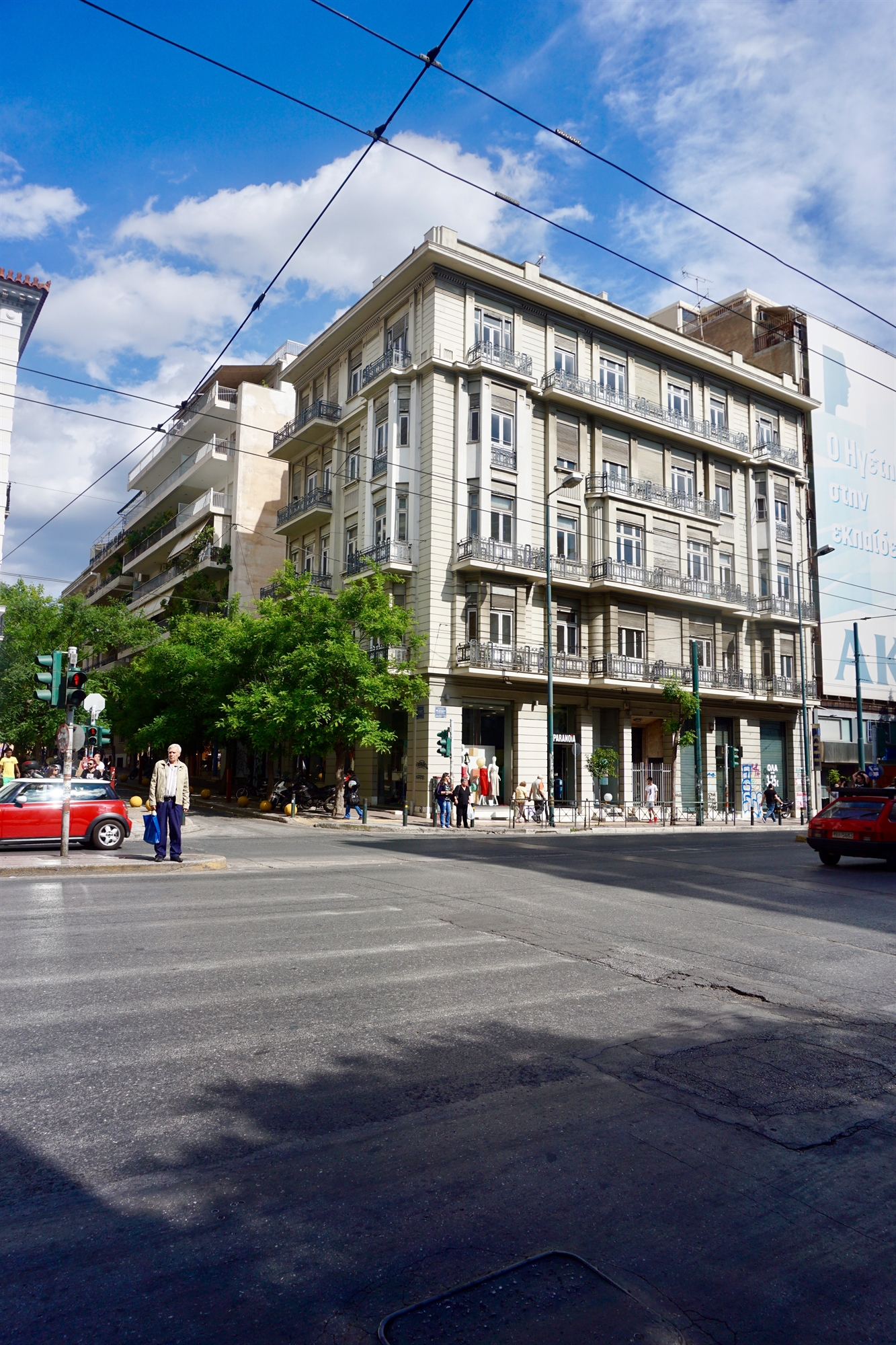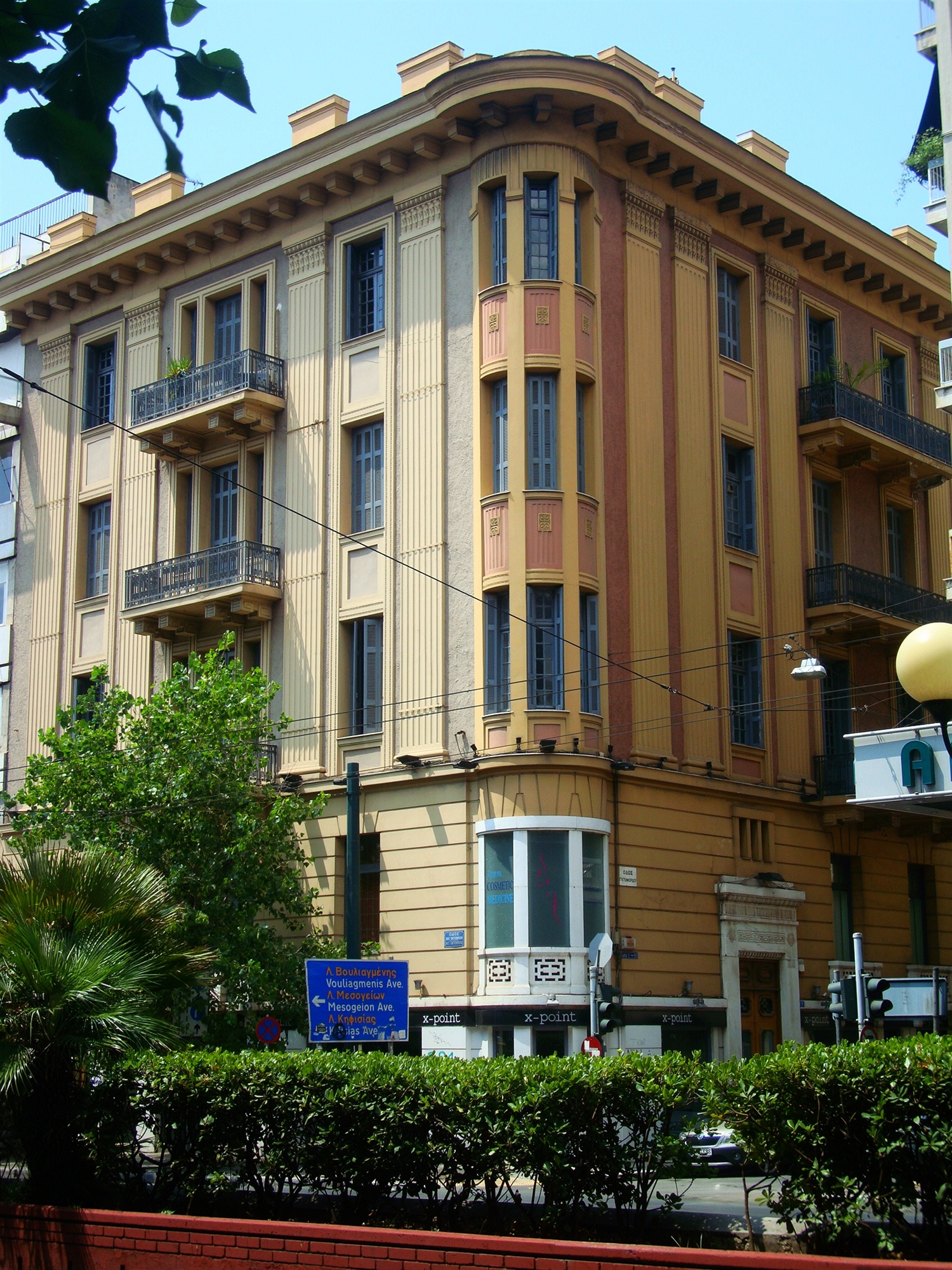
The announcement of the restoration of the Papaleonardo apartment building, where Maria Callas lived for several years (1937-1945), opens a chapter in Athenian history. And this tangle leads us to the very heart of Athenian urbanism, as it has been developing since the beginning of the 20th century, to the Patision axis. Built around 1925 at Patision 61 and signed by the versatile architect Kostas Kitsikis, this magnificent residential building is in itself a beautiful expression of all those movements in post-1920 Athens middle-class society.
This story, with its many parameters and numerous subsections, is told in a silent urban wonder that is largely underestimated by the official urban narrative. And this “miracle” was organized on the wider axis of Patision with the center of Egypt Square, the center of the National Archaeological Museum, the arm of the Ares Field and the banks of all the streets from Julianou to others. The Papaleonardo apartment building will be restored at the initiative of the Municipality of Athens through Anaplasi Athens S.A. It is a project included in the NSRF with a budget of 6.8 million euros, a tender will be announced soon and after the restoration of the building it will house the Maria Callas Academy of Lyric Art, a lifelong dream of the President of the Academy, soprano Vasso Papantoniou.

This positive perspective, which after a long delay preserves the pattern of interwar architecture, gives rise to a new reference point in the axis of the Museum. At the same time, he puts a mosaic on the map of precisely these urban apartment buildings, which, for various reasons, were erected near Egypt Square in 1923-1930. Precursors of the modernist tenements of the 1930s with Bauhaus principles and Art Deco lexicon, the tenements of the 1920s are a distinct generation of residential buildings designed for middle to high income people, incorporating the conveniences of new home technologies and a morphology that speaks of the last chapter of historical rhythms before the final dominance of the modern currents of the Modern Movement.
These tenements were also modern, built at the aesthetic and ideological crossroads of the interwar period, before 1930. But they were not “modern” in the sense that we understand the term after the rise of modernism. These were buildings of three to five stories, with elevators and central heating, rich finishes and understated luxury. These were prestigious apartment buildings in the style of the Athenian small palace with the signatures of architects preferred by the wealthy class (Vassilis Tsagris, Kostas Kitsikis, Panagiotis Zizelas, Nikos Nikolaides, etc.).
The restoration of the building at Patision 61 unravels the history of the cosmopolitan aesthetic residences that have been centered around Egyptou Square.
Patition Street, as it prompted a new expansion of the city as early as 1880, became a center for wealthy citizens long before the interwar period. As an example, note the neo-baroque Megaro Livieratou, now Hypatia, designed by Alexandros Nikoloudis around 1909, Megaro Iasonidou (GSEE) and the many neoclassical two- and three-story buildings on Parodo. But after 1915-20, due to the constant demand for good plots of land to be exploited or owned by the Greek bourgeois or wealthy emigrants, the area around Agiptou Square with all its annexes by September 3, Mavrommataya and Patisia became a center of architectural art. experimentation in various types of aesthetic modernism with variations of Art Nouveau, Art Nouveau, eclecticism and their hybrid variants.
The urban architecture of the 1920s is underestimated, although it is extremely interesting. He was considered conservative and largely discredited in the shadow of radical modernism after the 1930s. Although it has been the subject of study and research by many architectural historians in the past (Manos Biris, Nikos T. Holevas, Eleni Fessa-Emmanuel, Maro Kardamitsi-Adami, Vassilis Kolonas, and others), the 1920s remain open to further study.

The density of these palatial tenements, which were built largely on the broad axis of Patision, was a departure from the intimate urban environment of the earlier period, which was largely neoclassical in nature. These large apartments, with oak floors, amenities and imposing doors, were the culmination of a rapid move towards Europeanization, as perceived by the basic reading of everyday life in the West.

The development of this architectural type, to which the Papaleonardo tenement house belongs, filled in the deep gaps of identity and contributed to the development of a hybrid of the national school of cosmopolitanism, which appeared already in the Trikoupi period and has served steadily ever since. However, in the 1920s, and especially after the catastrophe in Asia Minor, the emergence of horizontal property and the need to bring the life of the urban elite closer to development in the West gave rise to and spread the type of eclectic luxury apartment building. From 1922 to 1934, when Areos Field was created, thousands of wealthy citizens sought high-standard housing in new tenements, first eclectic and then modernist. And after 1937 and the creation of Fokionos Negri, the entire axis of Patision was thickened with new apartments and residences.

But the glamorous 1920s have left these townhouses (as well as the refugee slums). Already demolished in the late 1970s, the mansions of Goulandris (Patision) and Samara (September 3) echo exactly the beginnings of an eclectic luxury apartment building, such as the surviving apartment buildings of Vassilis Tsagris (Patision and Hayden and Yulianou 26). or the Claudiano tenement house (Patesion 50), the Isaia tenement house (Patesion 65) and many others. Profitable house Papaleonardo reminded us of the pages of Athenian history.
Source: Kathimerini
Ashley Bailey is a talented author and journalist known for her writing on trending topics. Currently working at 247 news reel, she brings readers fresh perspectives on current issues. With her well-researched and thought-provoking articles, she captures the zeitgeist and stays ahead of the latest trends. Ashley’s writing is a must-read for anyone interested in staying up-to-date with the latest developments.